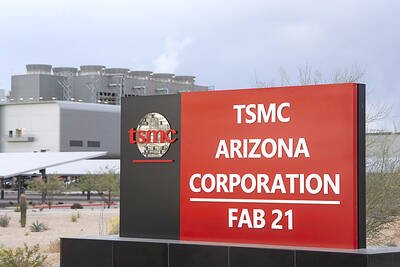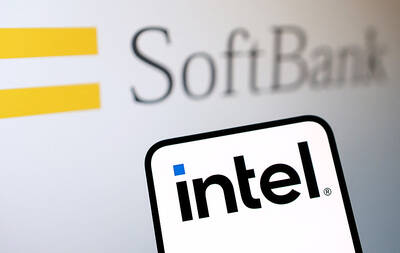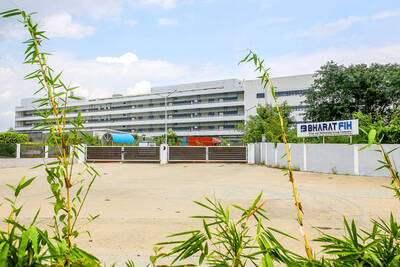Hewlett-Packard Development showcased its Halo studio in Taipei yesterday -- a videoconferencing system that enables multinational executives to talk to their business partners abroad.
"The Halo studio is a collaboration between HP and DreamWorks Animation, providing life-size and real-time video," HP corporate marketing manager Emily Chang (張紫珮) said.
MARKET SHARE
The world's largest computer maker said it would continue to double sales of Halo as it tries to gain market share from rival Cisco Systems Inc.
Hewlett-Packard has sold 140 of its Halo videoconference studios, each of which sells for about US$250,000, Darren Podrabsky, marketing manager for Halo, told reporters yesterday from Corvallis, Oregon, during a videoconference with reporters in Taipei.
Halo competes with Cisco's TelePresence in the video conferencing market, which was worth an estimated US$6.7 billion last year, researcher Global Industry Analysts Inc said.
DEAL
Hewlett-Packard last year signed a deal with Tandberg ASA, the world's second-largest teleconferencing provider, to make the two companies' systems communicate with each other.
"Every year we have doubled our install base and we expect to continue that kind of growth rate," Podrabsky said.
More than 30 percent of customers have also bought a US$40,000 server that makes Halo compatible with Tandberg equipment, he said.
HP has more than halved the cost of installation for its videoconference studios since the product was first released in 2005 at a cost of US$550,000 each.
FEATURES
The Halo studio allows customers to communicate with users from three cities and countries in 150 languages, including sign language, she said.
While accelerating business decision-making, the Halo studio will also greatly reduce companies' travel costs.
"HP itself saved at least US$300,000 annually on travel by resorting to Halo studio," Chang said.
In addition to the 30 or so Halo studios that HP uses internally, Chang said 140 studios had been installed worldwide so far, which were being used by clients from 22 countries such as ABN AMRO Bank, AIG Financial Products Corp and PepsiCo.

Taiwan Semiconductor Manufacturing Co (TSMC, 台積電), the world’s biggest contract chipmaker, booked its first-ever profit from its Arizona subsidiary in the first half of this year, four years after operations began, a company financial statement showed. Wholly owned by TSMC, the Arizona unit contributed NT$4.52 billion (US$150.1 million) in net profit, compared with a loss of NT$4.34 billion a year earlier, the statement showed. The company attributed the turnaround to strong market demand and high factory utilization. The Arizona unit counts Apple Inc, Nvidia Corp and Advanced Micro Devices Inc among its major customers. The firm’s first fab in Arizona began high-volume production

VOTE OF CONFIDENCE: The Japanese company is adding Intel to an investment portfolio that includes artificial intelligence linchpins Nvidia Corp and TSMC Softbank Group Corp agreed to buy US$2 billion of Intel Corp stock, a surprise deal to shore up a struggling US name while boosting its own chip ambitions. The Japanese company, which is adding Intel to an investment portfolio that includes artificial intelligence (AI) linchpins Nvidia Corp and Taiwan Semiconductor Manufacturing Co (TSMC, 台積電), is to pay US$23 a share — a small discount to Intel’s last close. Shares of the US chipmaker, which would issue new stock to Softbank, surged more than 5 percent in after-hours trading. Softbank’s stock fell as much as 5.4 percent on Tuesday in Tokyo, its

The prices of gasoline and diesel at domestic fuel stations are to rise NT$0.1 and NT$0.4 per liter this week respectively, after international crude oil prices rose last week, CPC Corp, Taiwan (台灣中油) and Formosa Petrochemical Corp (台塑石化) announced yesterday. Effective today, gasoline prices at CPC and Formosa stations are to rise to NT$27.3, NT$28.8 and NT$30.8 per liter for 92, 95 and 98-octane unleaded gasoline respectively, the companies said in separate statements. The price of premium diesel is to rise to NT$26.2 per liter at CPC stations and NT$26 at Formosa pumps, they said. The announcements came after international crude oil prices

SETBACK: Apple’s India iPhone push has been disrupted after Foxconn recalled hundreds of Chinese engineers, amid Beijing’s attempts to curb tech transfers Apple Inc assembly partner Hon Hai Precision Industry Co (鴻海精密), also known internationally as Foxconn Technology Group (富士康科技集團), has recalled about 300 Chinese engineers from a factory in India, the latest setback for the iPhone maker’s push to rapidly expand in the country. The extraction of Chinese workers from the factory of Yuzhan Technology (India) Private Ltd, a Hon Hai component unit, in southern Tamil Nadu state, is the second such move in a few months. The company has started flying in Taiwanese engineers to replace staff leaving, people familiar with the matter said, asking not to be named, as the